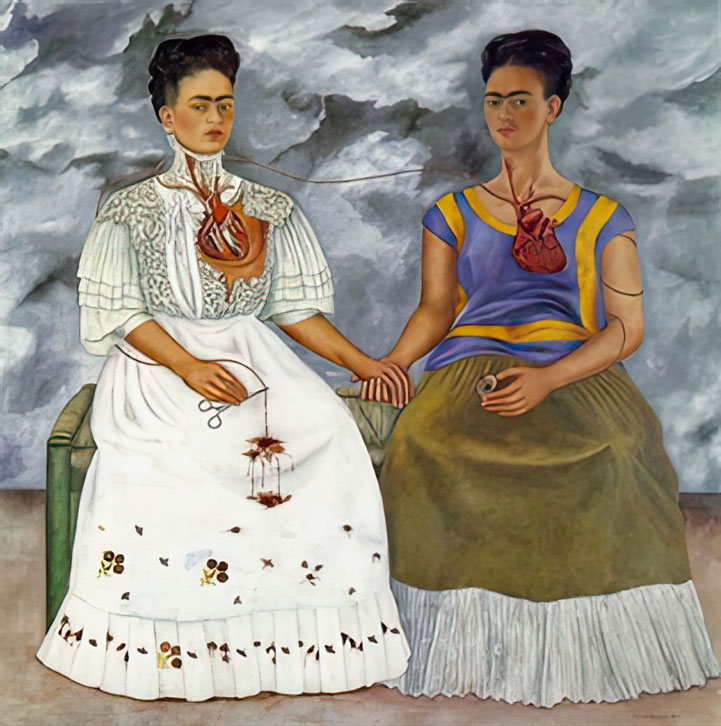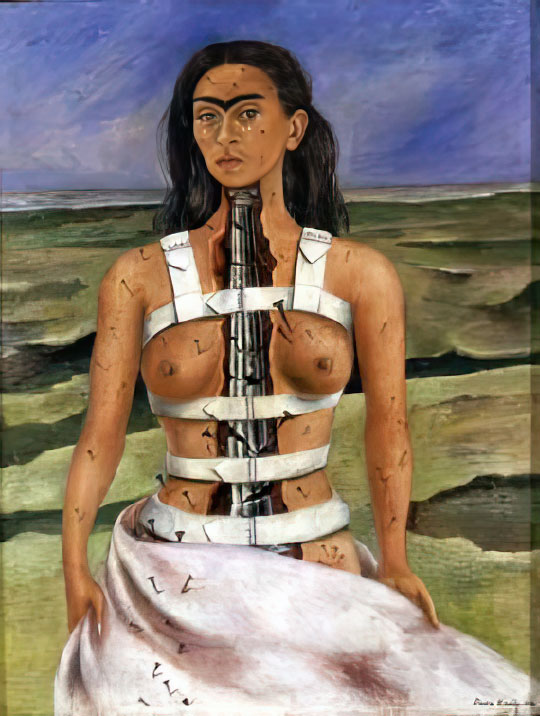The Complex Life of Frida Kahlo
By Jaime Herndon
A new film, Hola Frida, introduces children to the artist.
August 29, 2025
Science Culture Art Biology Review
At first glance, art and science might look like disparate fields, but on the contrary: Art and science have long been blended in various and sometimes unexpected ways, from Leonardo da Vinci to The Studio at NASA’s Jet Propulsion Laboratory.
Frida Kahlo (1907-1954) was a Mexican painter whose art included portraits and self-portraits that incorporated themes of anatomy, chronic pain, and disability, as well as nature and Mexican culture. She survived polio as a young child, resulting in her having a smaller right leg and permanent limp. Her experience only reinforced her desire to become a doctor, and she was on that path when a horrific bus accident left her seriously injured, requiring her to have multiple operations and to wear a plaster corset that forced her to stay in bed for several months. Kahlo’s art often incorporates biological elements such as spines, hearts, blood vessels, parts of skeletons, fetuses, and much more. Her work was a way for her to process her own medical trauma and share her experiences.

The Artchive

Wikipedia
When introducing children to Kahlo and her art, it’s understandable that her story would be altered a bit so that it’s developmentally appropriate. That's the approach taken in a new movie from Level 33 Entertainment, Hola Frida, which debuted in select theaters on August 8. It’s an animated film about Kahlo that the whole family can appreciate: The movie is appropriate for children, but adults will take in the more mature themes and implications, making it a richly layered film. Although it doesn’t shy away from disability or illness, the film treats these topics in a matter-of-fact way that is easy for kids to understand.
The movie is based on the French-Canadian book and animated series Frida, c’est moi, and takes place during Kahlo’s childhood. It shows how Frida found solace in her imagination during her illness, as well as during other hard times—including being bullied by peers for being different. But that imagination of hers served to nurture her creativity, setting the tone for the rest of her life.
The movie touches on her desire to be a doctor, and her indignation upon hearing that women weren’t always welcome in various fields at that time. We see that same fighting spirit when she wants to wear a snazzy pantsuit and her mother wants her to wear a skirt in public. The film really shows kids the essence of who Frida was, including how she integrated her disabilities and experiences into her life, instead of denying them or trying to hide them. At the same time, it brings the whimsy of Frida—the bright colors, the flowers and nature themes—together with Mexican folklore and culture, to create a visually vibrant, engaging film that introduces a trailblazing artist to a new generation.
American Scientist Comments and Discussion
To discuss our articles or comment on them, please share them and tag American Scientist on social media platforms. Here are links to our profiles on Twitter, Facebook, and LinkedIn.
If we re-share your post, we will moderate comments/discussion following our comments policy.